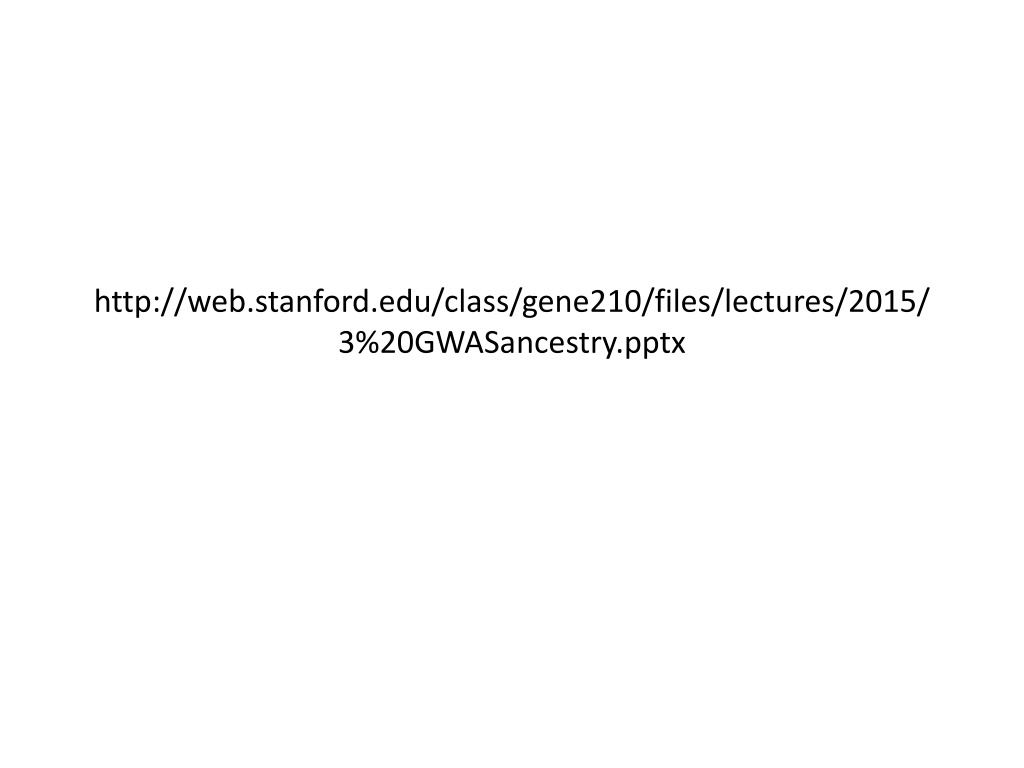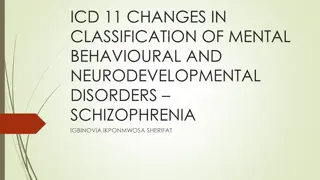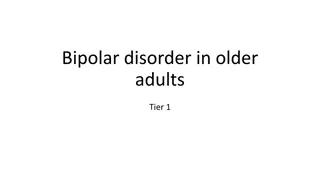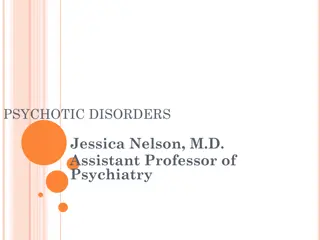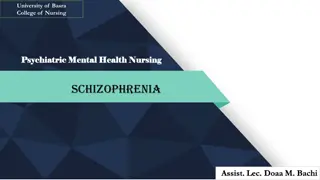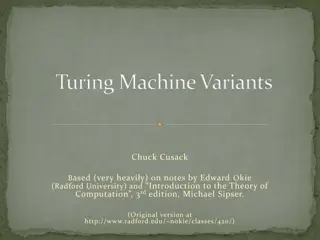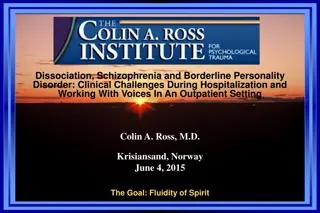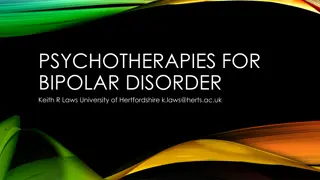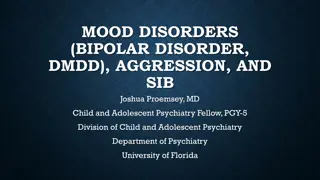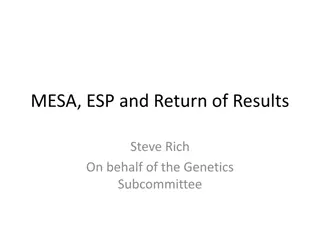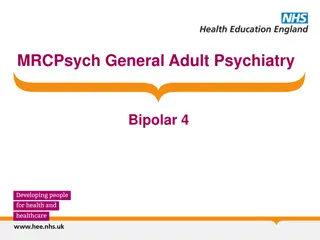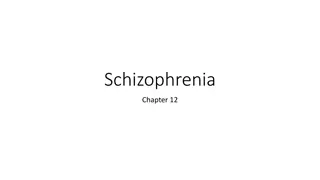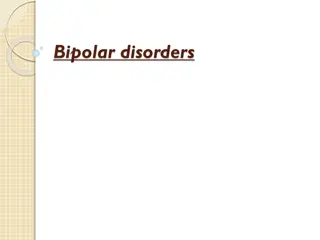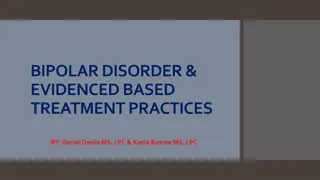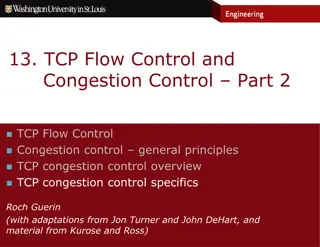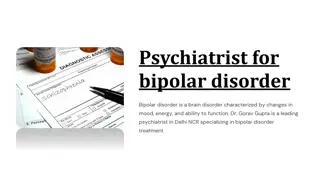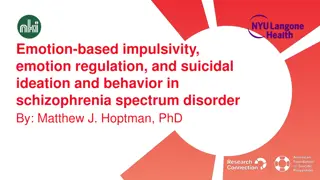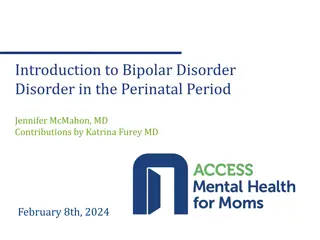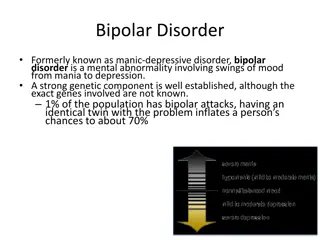Understanding Genetic Variants Associated with Bipolar Disorder and Schizophrenia
This material covers the genetic variants linked to bipolar disorder (BD) and schizophrenia, focusing on the rs1064395 variant in the neurocan gene (NCAN). The study analyzed a cohort of 682 patients with BD and 1300 controls to identify associations with the disorder. The presentation emphasizes the importance of summarizing traits, study cohorts, p-values, odds ratios, and genetic knowledge related to SNP analysis.
Download Presentation

Please find below an Image/Link to download the presentation.
The content on the website is provided AS IS for your information and personal use only. It may not be sold, licensed, or shared on other websites without obtaining consent from the author. Download presentation by click this link. If you encounter any issues during the download, it is possible that the publisher has removed the file from their server.
E N D
Presentation Transcript
http://web.stanford.edu/class/gene210/files/lectures/2015/ 3%20GWASancestry.pptx
Height Do height exercise in Genotation/traits/height Fill out form. Submit SNPs
SNPedia The SNPedia website http://www.snpedia.com/index.php/SNPedia A thank you from SNPedia http://snpedia.blogspot.com/2012/12/o-come-all-ye-faithful.html Class website for SNPedia http://stanford.edu/class/gene210/web/html/projects.html List of last years write-ups http://stanford.edu/class/gene210/archive/2012/projects_2014.html How to write up a SNPedia entry http://stanford.edu/class/gene210/web/html/snpedia.html
What should be in your SNPedia write-up? Summarize the trait Summarize the study How large was the cohort? How strong was the p-value? What was the OR, likelihood ratio or increased risk? Which population? What is known about the SNP? Associated genes? Protein coding? Allele frequency? Does knowledge of the SNP affect diagnosis or treatment?
Summarize the trait BD is characterized by a fluctuation between manic episodes and severe depression. Schizophrenia is characterized by hallucinations, both visual and auditory, paranoia, disorganized thinking and lack of normal social skills.
Summarize the study How large was the cohort? How strong was the p-value? What was the OR, likelihood ratio or increased risk? This study was done by analyzing around 500,000 autosomal SNPs and 12,000 X-chromosomal SNPS in 682 patients with BD and 1300 controls. The rs1064395 was highly significant with a p-value of 3.02X10-8 and an odds ratio of 1.31, with A being the risk allele.
What is known about the SNP? Associated genes? What was the OR, likelihood ratio or increased risk? rs1064395 is a single nucleotide variant (SNV) found in the neurocan gene (NCAN) that has been implicated as a predictor of both bipolar disorder (BD) and schizophrenia.
Class GWAS http://web.stanford.edu/class/gene210/web/html/exercises.html eye color data for rs4988235
Class GWAS http://web.stanford.edu/class/gene210/web/html/exercises.html eye color data for rs7495174
eye color data for rs7495174 How do we calculate whether rs7495174 is associated with eye color? What is the threshold for significance? Later: odds ratio, increased likelihood
Class GWAS Calculate chi-squared for allelic differences in all five SNPs for one of these traits: Earwax Lactose intolerance Eye color Bitter taste Asparagus smell
Class GWAS (n=98) Allele p-values rs4988235 rs7495174 rs713598 rs17822931 rs4481887 Earwax .09 .0001 .27 .001 .62 Eyes .12 0.003 0.015 0.144 0.42 Asparagus .36 .01 .67 .28 .14 Bitter .79 .76 .011 .80 .09 Lactose .09 1.0 0.65 1.0 0.62
Class GWAS 3. genotype counts T is a null allele in ABC11 T/T has dry wax. T/C and C/C have wet earwax usually.
Recessive model is best for earwax rs17822931 Allelic p value = Genotype p value, T is dominant = Genotype p value, T is recessive = .0014 0.34 .0001
3 genetic models allelic Dominant Recessive Earwax rs17822931 P = .0014 (T) P= .34 (T) P = .0001 Eyes .003 (G) .0093 (G) .57 Asparagus .14 (G) .48 (A) .084 Bitter .011 (G) 0.000498 0.0565 Lactose .09 (G) 0.41 0.20
Class GWAS results Lactose intolerance: rs4988235, GG associated with lactose intolerance Eye color: rs7495174, AA associated with blue/green eyes Bitter taste: rs713598, CC associated with inability to taste bitterness Earwax: rs17822931, TT associated with dry earwax Asparagus smell: rs4481887, A more likely to be able to smell asparagus than G
How different is this SNP in the cases versus the controls? Allelic odds ratio: ratio of the allele ratios in the cases divided by the allele ratios in the controls Wet wax C/T = 48/22 = 2.18 Dry wax C/T = 9/19 = .47 Allelic odds ratio In 2014, OR was 10.9 = 2.18/.47 = 4.6
Increased Risk: What is the likelihood of seeing a trait given a genotype compared to overall likelihood of seeing the trait in the population? Prior chance to have dry earwax 14 Dry/49 total students = .286 For TT genotype, chance is 9 Dry/12 students = .75 Increased risk for dry earwax for TT compared to prior: .75/.286 = 2.6
Class GWAS Odds Ratio, Increased Risk P-value OR IR Lactose Intolerance rs4988235 .09 2.7 1.2 Eye Color rs7495174 .0093 0 inf Asparagus rs4481887 .084 2.35 1.18 Bitter Taste rs713598 .000498 0.22 0.519 Earwax rs17822931 .004 4.6 2.6
